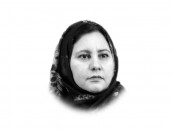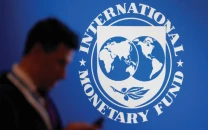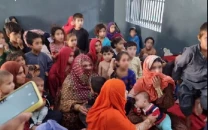Pahalgam: Indian blame game and ground realities
History offers a cautionary tale.

The tragic killing of innocent tourists in Baisaran, Pahalgam on April 22 has understandably sparked grief, outrage, and a flurry of accusations. Yet before succumbing to the blame game — particularly the one targeting Pakistan - it is crucial to step back and examine the broader context and implications of such violence.
History offers a cautionary tale. Former President Bill Clinton, in an introduction to Madeleine Albright's book, The Mighty and the Almighty: Reflections on America, God, and World Affairs, recounts an incident during a visit to India in 2000. Hindu militants murdered 38 Sikhs in cold blood. Clinton stated, "If I had not made the trip because I feared what militants might do, I could not have fulfilled my responsibilities as President of the United States."
A Telegraph India article from June 2006, by Charu Sudan Kasturi, includes an excerpt that references the Chattisinghpora, Anantnag massacre in March 2000, which resulted in the deaths of 35 Sikhs.
Initially, security forces attributed the incident to Pakistan-based terrorists and executed five alleged perpetrators. However, local villagers asserted that these individuals were innocent civilians, compelling the state government to initiate an investigation.
A three-member investigation team established in 2002 by Chief Minister Mufti Mohammed Sayeed eventually uncovered that three police officers and two doctors had been involved in falsifying DNA samples obtained from the deceased Kashmiris.
These events are not mere historical footnotes. They illustrate how, in moments of national trauma, convenient narratives often replace complex truths - and truth suffers.
Today, a similar pattern is emerging. Indian media, political leaders and official documents are once again pointing the finger at Pakistan. Prime Minister Narendra Modi has vowed to "teach the perpetrators a lesson", while India's Ministry of Jal Shakti has suspended the Indus Waters Treaty (IWT), citing Pakistan's "sustained cross-border terrorism".
The April 24 suspension notice explicitly refers to the "Indian Union Territory of Jammu and Kashmir" — a designation deeply contentious under UN Security Council resolutions, which regard the region as disputed.
Even the third point of the five-point notice of suspension of the IWT by Debashree Mukherjee, Secretary of India's Ministry of Jal Shakti, Department of Water Resources, dated April 24, implies direct involvement of the Pakistan government in acts of terrorism.
Secondly, linking a bilateral water treaty to an unproven terror allegation is not only diplomatically problematic but also dangerous. It raises critical questions: Is this a pretext for a long-planned withdrawal from the treaty? Has the Indian establishment been laying the groundwork for a policy of "water aggression" since at least 2016?
The swiftness of the IWT suspension, just a day after the Pahalgam killings, suggests a premeditated strategy rather than a reactive decision. This mirrors India's actions post-Pulwama in 2019; within six months, Article 370 was abrogated, stripping Kashmir of its special status and integrating it into the Indian Union.
Thirdly, to focus solely on Pakistan is to ignore an inconvenient but growing reality — terrorism in Jammu and Kashmir today is no longer an external problem alone. The insurgencies in most of Northeastern India also testify to the organic militant forces opposed to the status quo under the New Delhi rule.
As Dr Ajay Chrungoo, a Kashmiri physician and political scientist, argues, militancy now emerges from within. Radicalised local networks, disillusioned youth and homegrown jihadist cells are increasingly driving the violence, inspired by Al-Qaeda, ISIS ideologies.
Some groups even harbour hostility toward Pakistan. TTP, ISKP, BLA and BLF are some of the examples of terror groups involved in a relentless campaign to hurt interests of Pakistan. This decentralisation of terror has made it more mobile, more lethal and more difficult to attribute. Modern communication tools and access to black-market weapons — often from India's own insurgency-hit northeastern states — have only amplified their reach.
Dr Chrungoo also places blame squarely on India's own leadership. He holds National Security Advisor Ajit Doval and Home Minister Amit Shah accountable for "security lapses and flawed policies" that have allowed violence to flourish. And indeed, when tourist destinations like Anantnag and Pahalgam - far from the Line of Control - become hubs of militancy, it speaks of a deeper, internal crisis.
Of course, there may be sporadic links to groups based in Pakistan. But invoking these links without evidence within hours of an incident, and using them as grounds for sweeping policy shifts and saber-rattling neither serves truth nor ensures peace. It only undermines trust, escalates tensions and clouds rational debate.
Lastly, India — and the world -—must resist the temptation to simplify. The situation in Kashmir is neither black nor white. It is grey, layered, and deeply entangled in decades of militancy, mistrust and mutual hostility.
In the aftermath of the Pahalgam tragedy, grief must not be weaponised. Neither is scapegoating helpful. What we need is a sober, fact-based discourse - one that acknowledges both the external threats and the internal fractures. Only then can the region hope to move from reaction to resolution. Dumping the blame always at the neighbour's doorstep may provide some temporary deflection unless the intent is to keep the caldron on the boil for an already struggling Pakistan.














COMMENTS
Comments are moderated and generally will be posted if they are on-topic and not abusive.
For more information, please see our Comments FAQ